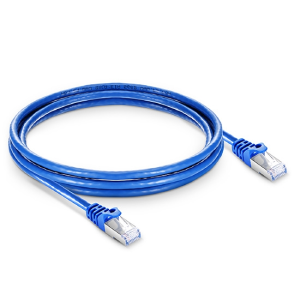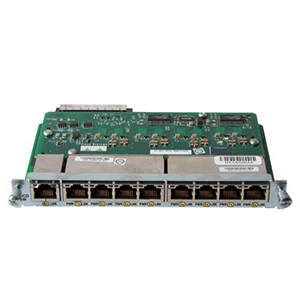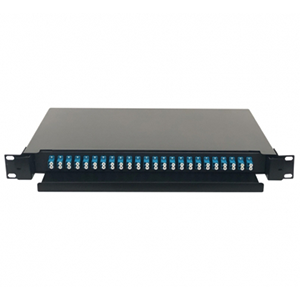In this article, I’ll dive into the speed and performance characteristics of Cat 6 cable. We will introduce the definition, structure, advantages and applicable scenarios of Cat 6 cables compared to other types of cables. By understanding Cat 6 cable’s speed capabilities, transmission performance, and its advantages in network latency, interference immunity, and long-distance transmission, you’ll be able to understand why Cat 6 cable is a popular choice for small and medium-sized businesses and home networks. Let’s explore the superior speed and performance of Cat 6 cables!
What is Cat 6 cable
Cat 6 cable is a high-performance cable used for network connections, with high transmission rates and anti-interference capabilities. The following is an introduction to the basic definition and structure of Cat 6 cables, its advantages and applicable scenarios compared with other types of cables, as well as common uses and application fields:
Basic definition and structure:
Cat 6 (Category 6) cable is a copper cable that complies with TIA/EIA-568 standards and is used to transmit data and network signals. It uses four pairs of twisted wires, each pair of wire cores has an independent shielding layer and an overall shielding layer to reduce electromagnetic interference and crosstalk. Each pair of wire cores is twisted together by 8 small copper wires, providing better signal transmission performance.
Advantages and applicable scenarios compared with other types of cables:
- High transfer rate: Cat 6 cable supports transmission frequencies up to 250 MHz, enabling it to provide higher data transfer rates and bandwidth capacity. It is better suited than Cat 5e cable to handle large data transfers, HD video streaming, audio streaming and other high-bandwidth applications.
- Low crosstalk and anti-interference performance: Cat 6 cable adopts stricter electrical parameters and shielding design, which can effectively reduce electromagnetic interference and crosstalk and provide more stable and reliable signal transmission. This makes Cat 6 cable perform better in high-interference environments and is suitable for commercial and industrial environments.
- Backwards Compatibility: Cat 6 cables are compatible with previous Cat 5 and Cat 5e equipment, so they can seamlessly replace existing network equipment and infrastructure without having to replace all cables and connectors.
Common uses and application areas:
- Local Area Network (LAN) connection: Cat 6 cables are widely used in LAN connections in offices, schools, hospitals and other places to connect computers, printers, switches, routers and other devices to achieve data transmission and Internet access.
- Data Center: In data centers, Cat 6 cables are commonly used to connect servers, storage devices, network switches, and routers to support high-speed data transmission and intra-data center communications.
- HD Video and Audio Transmission: The high bandwidth and low interference characteristics of Cat 6 cable make it ideal for transmitting HD video and audio signals. It is widely used for transmitting video surveillance signals, video conferencing, audio streaming and other applications.
- Telecommunications and network providers: Telecommunications and network providers typically use Cat 6 cables in their infrastructure for network backbone connections, broadband access, and delivery of high-speed Internet services.
- Highly demanding environments: Because Cat 6 cable has high anti-interference capabilities, it is widely used in industrial environments, medical facilities, and other places that require high network performance.
In conclusion, Cat 6 cable has become a common choice in modern network connections by providing high transmission rates, low crosstalk and interference immunity. It is suitable for a variety of environments and application scenarios, including offices, data centers, HD video transmission and network providers.
Speed and transfer performance overview
Cat 6 cable has excellent speed capabilities and transmission performance, able to meet high bandwidth needs and provide stable and reliable data transmission. Below is an explanation of Cat 6 cable speed and transmission performance, as well as a discussion of the maximum transmission rates and frequency ranges it supports, and its superior performance in high-bandwidth-demand environments:
Speed capabilities and transmission performance:
The design and characteristics of Cat 6 cable enable it to provide superior speed and transmission performance. It adopts twisted wire pairs and shielding design, which effectively reduces electromagnetic interference and crosstalk, providing more stable and reliable signal transmission. Here are some of the key transmission performance characteristics of Cat 6 cable:
-
Transfer rates: Cat 6 cable supports transfer rates up to 10 Gbps (gigabits per second). This makes it suitable for handling large data transfers, HD video streaming, audio streaming, and other high-bandwidth applications. In comparison, Cat 5e cable typically supports transfer rates up to 1 Gbps.
-
Frequency range: Cat 6 cable supports a higher transmission frequency range, typically up to 250 MHz. This means it can handle higher frequency signals and provide greater bandwidth capacity. The transmission frequency range of Cat 5e cable is typically 100 MHz.
-
Crosstalk suppression: Cat 6 cables adopt stricter electrical parameters and shielding structures in their design to reduce crosstalk. Crosstalk is when signals in adjacent cables interfere with each other. By reducing crosstalk, Cat 6 cable provides more reliable and stable data transmission.
-
Anti-interference ability: Cat 6 cable’s shielded design and high-quality materials make it highly resistant to interference. It effectively protects against electromagnetic interference, including interference from power supplies, electrical wires, electronic equipment and other nearby cables.
Cat 6 cable’s superior performance in environments with high bandwidth requirements:
Cat 6 cable’s high speed and superior transmission performance make it excellent in high-bandwidth demand environments, especially suitable for multimedia streaming and big data transmission. Here are the advantages of Cat 6 cable in these environments:
-
Multimedia streaming: Cat 6 cable’s high transfer rate and interference immunity make it ideal for transmitting high-definition video, audio streaming, and other multimedia data. It provides faster data transfer speeds and more stable signal quality to ensure a smooth multimedia experience.
-
Big Data Transfer: The high bandwidth capacity and speed capabilities of Cat 6 cable are very important when handling large amounts of data transfer. It can effectively support big data transmission, data backup, cloud storage and other applications that require fast data transmission.
In short, Cat 6 cables demonstrate superior performance in environments with high bandwidth requirements through high transmission rates, large frequency range, and excellent anti-interference performance. It is suitable for multimedia streaming, big data transmission and other application scenarios that require high-speed and stable data transmission.
Network latency and anti-interference performance
Cat 6 cable excels in network latency and has excellent anti-interference performance and noise suppression capabilities. The following is an introduction to these aspects of Cat 6 cable, as well as its advantages in maintaining a stable network connection and reducing data transmission errors:
Network latency performance:
Cat 6 cable helps reduce network latency by providing high transfer rates and low signal transmission delays. Latency refers to the time it takes for data to travel from the sender to the receiver. Because Cat 6 cable supports higher transmission rates and frequency ranges, data can travel through the cable faster, reducing transmission delays. This is particularly important in applications with high real-time requirements, such as online gaming, video conferencing, and voice calls.
Anti-interference performance and noise suppression capabilities:
Cat 6 cable uses a shielded design and high-quality materials to provide excellent anti-interference performance and noise suppression capabilities. The following are the anti-interference characteristics of Cat 6 cables:
-
Electromagnetic interference (EMI) suppression: The shielding layer and overall shielding structure of Cat 6 cables can effectively block interference from external electromagnetic sources (such as power supplies, wires, wireless devices, etc.). This helps maintain signal integrity and stability and reduces data transmission errors.
-
Crosstalk suppression: Cat 6 cable adopts twisted pair and shielding design, which can effectively reduce crosstalk between adjacent cables. Crosstalk is the phenomenon of signals interfering with each other between adjacent pairs of wires. By reducing crosstalk, Cat 6 cable is able to provide more reliable and accurate data transmission, reducing data errors and the need for retransmissions.
Advantages: Maintain stable network connection and reduce data transmission errors
Cat 6 cables have clear advantages in maintaining a stable network connection and reducing data transmission errors. Its anti-interference performance and noise suppression capabilities enable it to effectively resist external interference and maintain signal stability. This helps reduce packet loss, transmission errors, and network outages, providing a more stable and reliable network connection.
In addition, Cat 6 cable’s high transfer rates and lower latency also help reduce the possibility of data transmission errors. Data can be transmitted more quickly, reducing delays and time windows in transmission, thereby reducing the probability of data transmission errors.
In short, Cat 6 cable performs well in terms of network latency, has excellent anti-interference performance and noise suppression capabilities. It maintains a stable network connection, reduces data transmission errors, and provides an efficient data transmission experience. This makes Cat 6 cable ideal for applications that require high network performance and reliability.
Long distance transmission and signal attenuation
Cat 6 cables demonstrate excellent performance over long distances. The following highlights the advantages of Cat 6 cable for long-distance transmission and explains signal attenuation and signal retention considerations while providing practical advice on maintaining signal strength and quality when using Cat 6 cable:
Long distance transmission performance:
The design and characteristics of Cat 6 cable allow it to perform well over long distances. Its key features include:
-
Transmission distance: Cat 6 cable supports high-speed transmission over the longest distances. Typically, Cat 6 cable has a maximum transmission distance of 100 meters (328 feet). This means Cat 6 cable is able to provide reliable signal transmission even in larger network cabling environments, such as office buildings or data centers.
-
Transmission performance maintenance: Cat 6 cables can maintain high transmission performance over long distances. Even within a transmission distance of 100 meters, Cat 6 cable can still provide high-speed transmission and low signal attenuation, ensuring reliable transmission of data.
Considerations for signal attenuation and signal retention:
Signal attenuation refers to the gradual weakening of a signal during transmission. In long-distance transmission, signal attenuation may affect the quality and reliability of data transmission. The following are some considerations that affect signal attenuation and signal retention:
-
Cable Quality: Using high-quality Cat 6 cable is key to maintaining signal strength and quality. High-quality cables have better transmission characteristics, can reduce signal attenuation and provide more stable signal transmission.
-
Cable length: Longer cable lengths may cause increased signal attenuation. Make sure to use Cat 6 cable within the specified maximum transmission distance to maintain signal strength and quality.
-
Environmental interference: External sources of interference, such as power lines, electronic equipment, and wireless devices, may affect signal transmission and increase signal attenuation. Try to keep cables away from these sources of interference, or take shielding measures to reduce interference.
Practice recommendations to maintain signal strength and quality:
The following are practical recommendations for maintaining signal strength and quality when using Cat 6 cable:
-
Use high-quality cables: Choose reliable Cat 6 cable brands and suppliers to ensure cable quality and performance.
-
Follow stated maximum transmission distances: Make sure to use Cat 6 cable within the stated maximum transmission distances to maintain transmission performance and signal strength.
-
Avoid the proximity of cables to sources of interference: Try to avoid placing Cat 6 cables in close contact with potential sources of interference such as power cords, electronic equipment, and wireless devices.
-
Use attenuation compensator (Repeater) or repeater (Extender): For situations where longer transmission distance is required, you can consider using attenuation compensator or repeater to enhance the signal transmission capability and extend the transmission distance. .
-
Regular inspection and maintenance: Regularly check the connection status and physical damage of Cat 6 cables, and ensure that the cable connections are firm and reliable. If any problems are found, repair or replace the damaged cable promptly.
In summary, Cat 6 cables provide excellent performance over long distances. To maintain signal strength and quality, choosing high-quality cables, following maximum transmission distance requirements, avoiding sources of interference, and regularly inspecting and maintaining cables are all important practical recommendations. These measures will help ensure that Cat 6 cables provide reliable and high-quality data transmission over long distances.
Cat 6 cable compared to other categories of cables
Cat 6 cables have some differences in speed and performance compared to other common categories of cables, such as Cat 5e and Cat 7. Below we compare them and explain why Cat 6 cable is a popular choice for small and medium-sized businesses and home networks:
Speed and transmission performance:
- Cat 5e Cable: Cat 5e cable is an improved version of Cat 5 cable, capable of supporting transfer rates up to 1 Gbps (gigabits per second). Its transmission performance is suitable for most home and office network needs.
- Cat 6 Cable: Cat 6 cable is a further improvement on Cat 5e cable, capable of supporting higher transmission rates, up to 10 Gbps (Ten Gigabits per second). It has larger bandwidth and lower transmission delay, and is suitable for applications with higher requirements on network performance, such as multimedia streaming, high-definition video and big data transmission.
- Cat 7 Cable: Cat 7 cable is a high-performance cable capable of supporting higher transmission rates, up to 10 Gbps or higher. It uses stricter shielding and isolation measures to reduce interference and crosstalk. Cat 7 cable is typically used in special environments or professional applications such as data centers and industrial networks.
Cost and suitability:
- Cat 5e Cable: Cat 5e cable is an affordable and widely available cable for small to medium-sized businesses and home networks. It can meet most common network needs and has a good price/performance ratio.
- Cat 6 cable: Cat 6 cable is slightly more expensive than Cat 5e cable, but it provides higher transmission rates and better performance. Cat 6 cable is a popular choice for those small and medium-sized businesses and home networks that require higher network bandwidth and more reliable connections.
- Cat 7 cable: Cat 7 cable is more expensive than Cat 6 cable and is suitable for special scenarios that have strict requirements for high-speed and high-performance networks. For most small and medium-sized businesses and home networks, the cost of Cat 7 cable is probably too high, beyond what is actually needed.
In short, Cat 6 cables provide higher transmission rates and better performance than Cat 5e cables, while being relatively reasonably priced. Cat 6 cable is a popular choice for small to medium-sized businesses and home networks because it meets most common networking needs and provides higher bandwidth and more reliable connections. Although Cat 7 cable has higher performance, its cost is higher and it is suitable for special environments with strict requirements for high-speed and high-performance networks. Therefore, in most cases, Cat 6 cable is ideal for small to medium-sized businesses and home networks.
Overview:
Thank you for reading our blog! Through this in-depth exploration of this article, you will have a more comprehensive understanding of the speed and performance characteristics of Cat 6 cables. As a high-performance network transmission medium, Cat 6 cable has superior speed and transmission performance. It supports maximum transfer rates and frequency ranges up to 10Gbps, making it ideal for handling big data transfers and multimedia streaming.
Cat 6 cable has clear advantages in speed and performance over other common categories of cable, such as Cat 5e and Cat 7. It is a popular choice among small and medium-sized businesses and home networks as it provides high-speed, reliable and stable network connectivity to meet growing data demands.
Cat 6 Ethernet Cables FAQ
Cat 6 Ethernet cables provide several advantages, including higher data transfer rates, improved signal quality, reduced crosstalk and interference, and better performance over longer distances compared to lower category cables.
Cat 6 cables are designed to support data transfer speeds of up to 10 gigabits per second (Gbps) over short distances (up to 55 meters) and 1 Gbps over longer distances (up to 100 meters).
Lorem ipsum dolor sit amet, consectetur adipiscing elit, sed do eiusmod tempor incididunt ut labore et dolore magna aliqua. Ut enim ad minim veniam, quis nostrud exercitation ullamco laboris nisi ut aliquip ex ea commodo consequat.
Yes, Cat 6 cables are suitable for Power over Ethernet (PoE) applications. They are designed to handle higher power levels required by PoE devices, such as IP cameras, wireless access points, and VoIP phones.
Cat 6a (Category 6a) cables are an enhanced version of Cat 6 cables. They have stricter specifications and can support higher data transfer speeds of up to 10 Gbps over the full 100-meter distance. Cat 6a cables also provide better resistance to crosstalk and external interference.
Yes, Cat 6 cables are commonly used in home networks, especially when high-speed internet connections or media streaming applications are involved. They provide better future-proofing and support for bandwidth-intensive activities.
Cat 6 cables use the same RJ-45 connectors as other Ethernet cables. However, to achieve the full performance capabilities of Cat 6 cables, it is recommended to use high-quality connectors and ensure proper termination and wiring practices.
Cat 6 cables are not specifically designed for outdoor use. If you need to run Ethernet cables outdoors, it is recommended to use outdoor-rated Ethernet cables that provide additional protection against moisture, UV rays, and other environmental factors.
To choose the right length for Cat 6 cables, consider the distance between network devices that need to be connected. Measure the required distance and select a cable length that allows for proper cable management without excessive slack or tightness.




